The real secret to continuously ranking well in search engines lies in consistent, strategic maintenance.
In this guide, we’re going to show you exactly how to maintain your SEO the right way.
Let’s kick things off with some basics.
What Is SEO Maintenance?
SEO maintenance is the ongoing process of monitoring, updating, and optimizing your website to maintain and improve its search engine rankings.
The initial efforts you make to optimize your website are usually not enough to produce long-term results. Google algorithms change, your content becomes outdated, and technical issues arise.
So, your website needs consistent care and attention to weather these changes.
Without regular maintenance, even the most perfectly optimized website can gradually lose its rankings.
Perform SEO maintenance so it doesn’t happen to you.
How Much Maintenance Does SEO Require?
The level of SEO maintenance you need depends on your website’s size and the competitive landscape of your industry.
It’s extremely difficult to give a one-size-fits-all answer.
Small websites may only need a few hours of maintenance each month, focusing on essential updates and minor optimizations.
But larger websites in competitive niches will require more frequent and detailed maintenance to stay ahead.
We’ll cover specific maintenance tasks and how often to perform them later in this guide. But first, let’s clear something up.
SEO Is an Ongoing Process
“Set it and forget it” doesn’t work when it comes to SEO.
You need to continuously check on and maintain your website’s SEO performance because:
- Google regularly updates its algorithm: While most are minor tweaks, some significant updates can dramatically impact your site’s rankings. If you’re not adapting your site’s SEO to align with Google’s latest guidelines, you could see a drop in traffic.
- Your competitors are probably continuously optimizing their websites: If you’re not actively improving your SEO, you could gradually slip down the search results.
- Your technical SEO health might deteriorate over time: Technical issues like broken links, duplicate content, and security problems might creep in. Without regular maintenance, these technical issues may go unnoticed and hurt your rankings.
- Your content can become outdated and inaccurate: Regularly updating your content ensures it remains valuable to your audience and continues to rank well in search engines.
How to Maintain Your SEO Results
While there are a lot of aspects to keep on top of, maintaining your SEO doesn’t have to be overwhelming.
Here’s how you can focus your efforts on the SEO maintenance tasks likely to yield the best results.
Track Performance Metrics and Identify Issues
Performance metrics are key indicators that show how well your website performs in search results.
By monitoring these key indicators regularly, you can spot potential problems before they start to seriously impact your rankings.
Here are two metrics you need to track:
- Keyword rankings: Monitor how well your pages rank for your target keywords. Pay attention to any sudden drops or gradual declines, as these could indicate problems with your site’s SEO.
- Search traffic: Keep an eye on your organic traffic. A drop in keyword rankings will correlate with a subsequent drop in search traffic.
We suggest you review these metrics biweekly. This gives you enough time to spot problems while ensuring you don’t miss out on anything that requires immediate attention.
For monitoring keyword rankings, use Semrush’s Position Tracking tool.
Add your keywords to the tool and complete the setup process.
Then, go to the “Overview” tab and scroll down to the “Rankings overview” report.
You’ll see how well you’re ranking for your target keywords. Over time, you’ll also see ranking improvements or declines.

For monitoring organic traffic, use Google Analytics (GA).
Open the tool and go to “Reports” > “Acquisition” > “Traffic Acquisition.”
You’ll see all your traffic sources.
Uncheck all channels except “Organic Search” to focus solely on organic traffic from search engines. And then click “Plot rows” to see a graph of your traffic over time.

Refresh Outdated Content
Updating your content helps maintain its rankings and keeps the information relevant to your visitors.
Outdated information can hurt your credibility and cause users to leave your site, which could signal to Google that your content isn’t meeting user needs.
So, we recommend you review your content every six months. (Depending on your industry, you may need to review content more or less often.)
Here’s a simple process to follow:
First, use Google Search Console to identify your most important pages.
Go to “Performance” > “Search results.” Then, switch to the “Pages” tab to see which pages are receiving the most clicks and impressions.
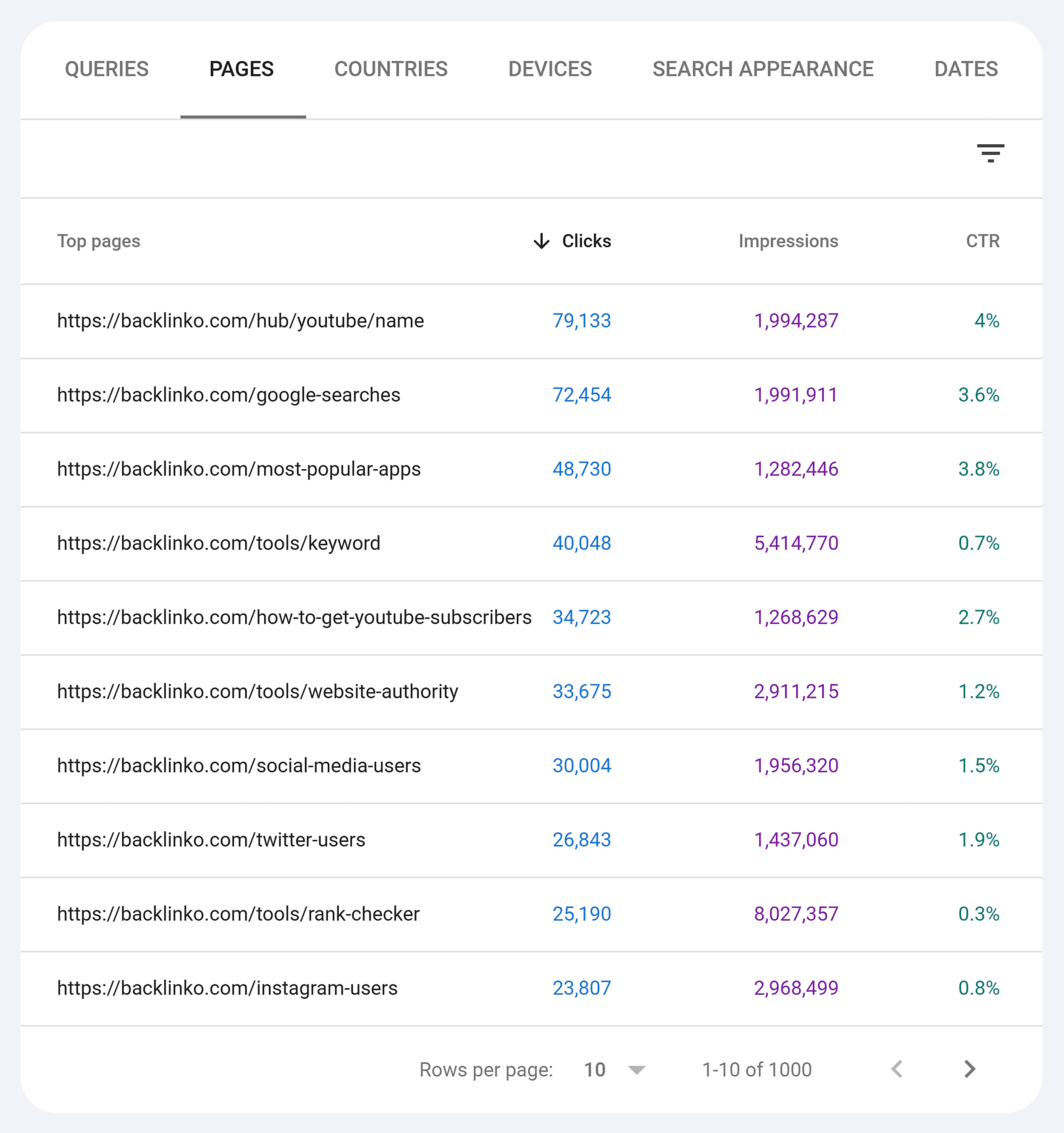
Then, check each page for outdated information and update the content.
Here’s what to look for when updating content:
- Statistics: Update outdated statistics and sources. Make sure all facts and figures are current.
- Product information: Update any references to products or services, especially if there have been changes or new releases. Remove mentions of discontinued products.
- Screenshots and visuals: Replace old screenshots and images with new ones. This is especially important if your content includes product interface screenshots that may have changed.
- Missing subtopics: Identify any subtopics that weren’t covered initially. Add these to make your content more comprehensive and valuable.
- Search intent: Re-evaluate whether your content still aligns with the current search intent of your target keywords. Adjust the content as necessary to better meet users’ needs.
Search Intent and SEO: A Complete Guide
Technical SEO issues are problems that can prevent search engines from properly crawling (finding), indexing (storing), or ranking your website.
Even small technical issues can impact your SEO performance, so it’s important to monitor and fix them regularly.
We suggest you perform technical SEO checks at least once every month.
Start by examining the “Pages” report in Google Search Console.
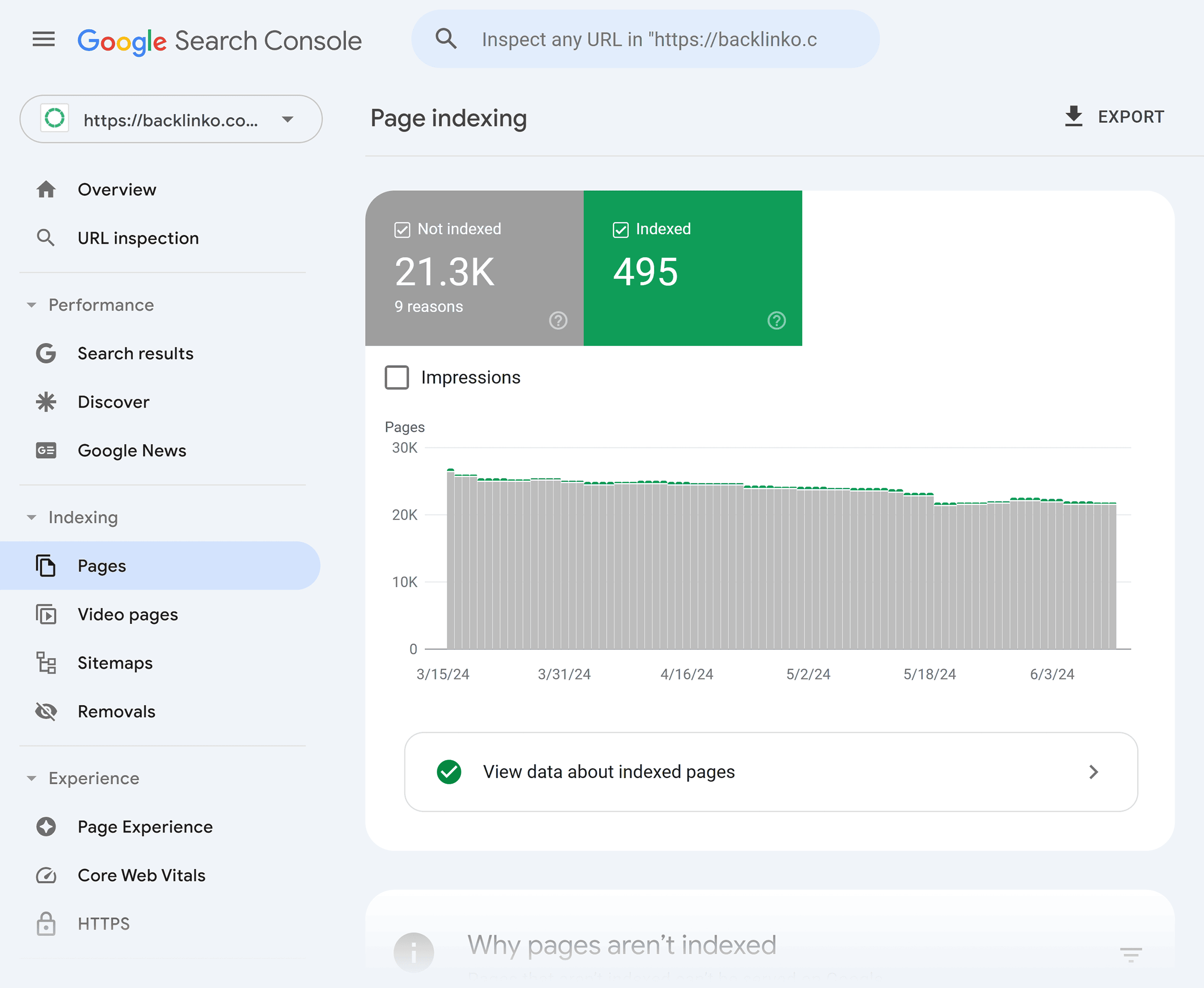
This report highlights technical SEO issues Google detects that may be affecting your site’s visibility in search results.
Focus on the “Why pages aren’t indexed” section.
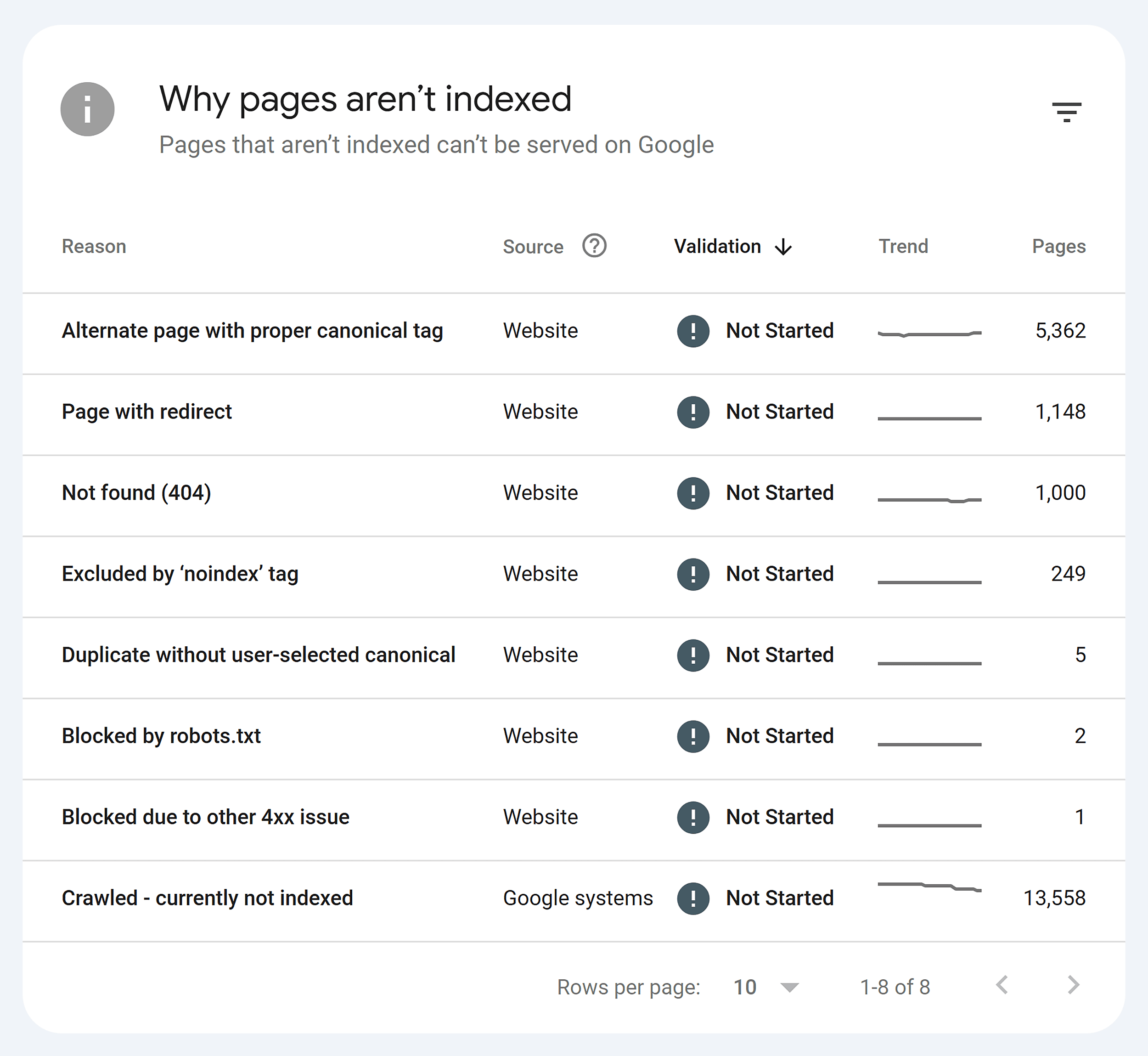
It’s crucial that all your important pages are indexed. Otherwise, they won’t appear in search results and have no chance of ranking.
For a detailed analysis of your site’s technical health, use Semrush’s Site Audit tool.
Set up a project in the tool and run a full crawl of your website. Once the report is ready, you’ll get a detailed account of technical SEO issues like:
- Duplicate content: Pages with identical or very similar content that could confuse search engines
- Broken links: Internal and external links that lead to nonexistent pages
- 4xx errors: Pages returning error codes that you need to fix or redirect
- Slow page load speed: Pages taking too long to load that may hurt your user experience and rankings
- Core Web Vitals issues: Problems with loading, interactivity, and visual stability on your website
- Crawlability problems: Issues preventing search engines from properly accessing your content
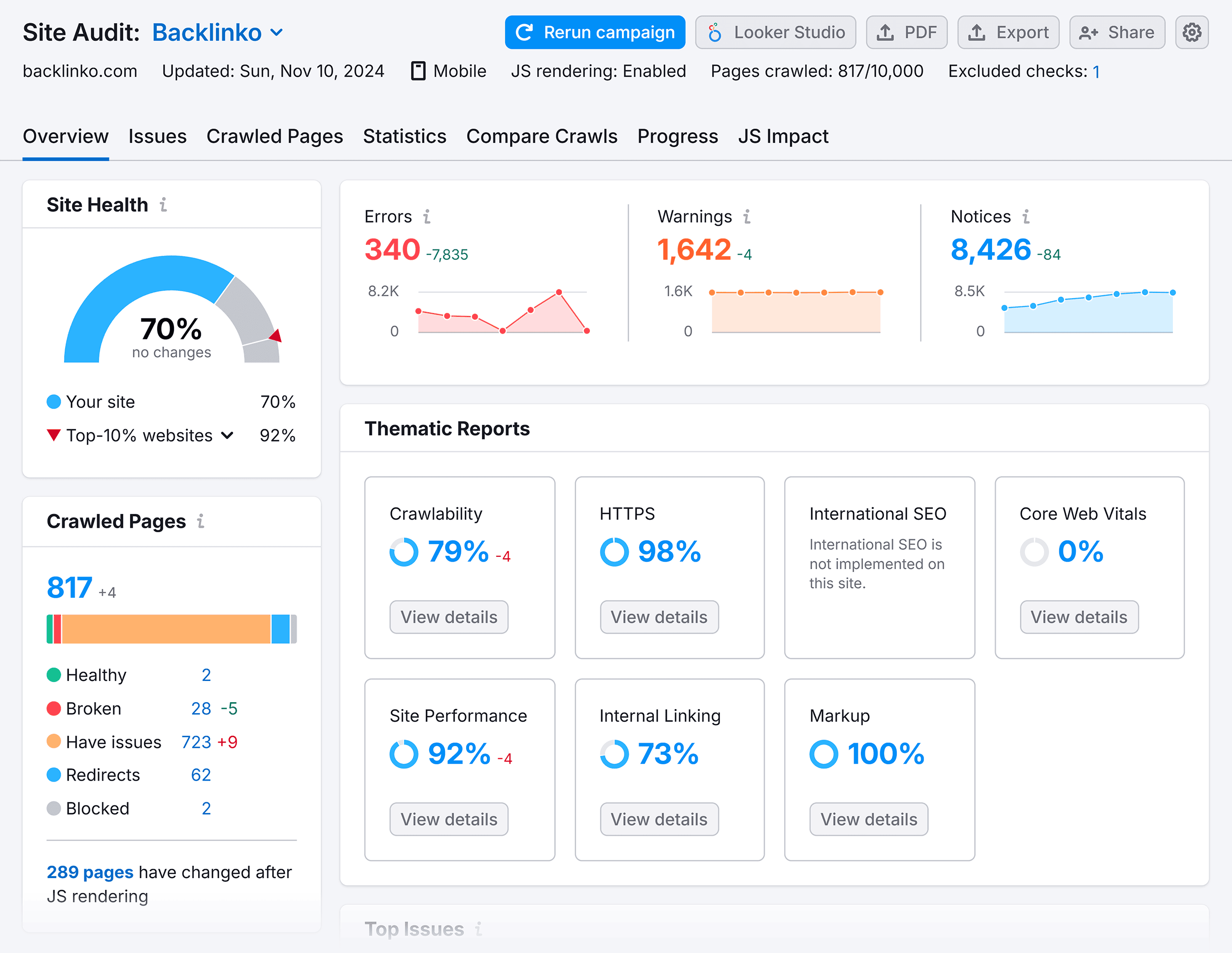
The tool also provides advice on how to fix each issue.
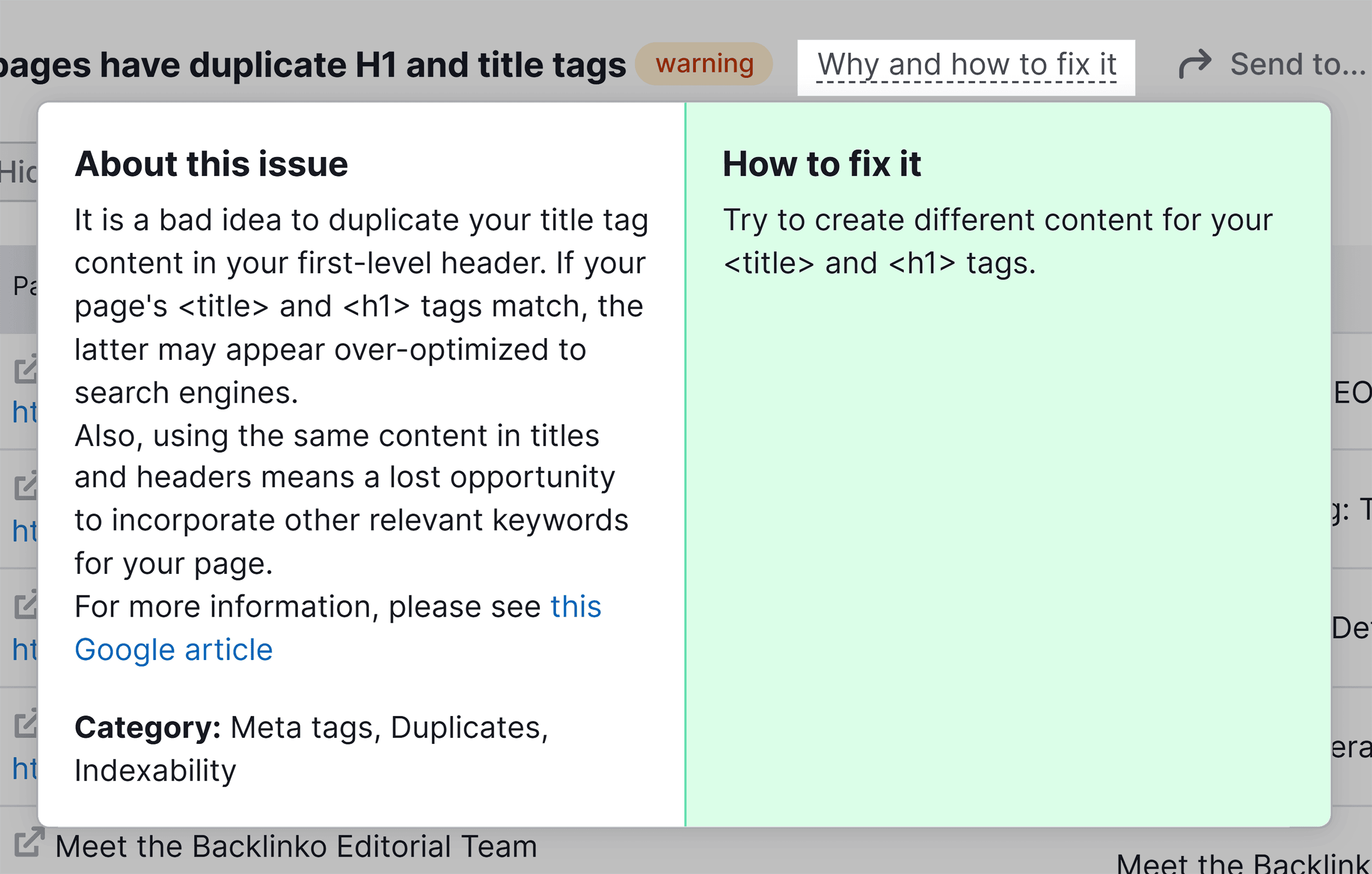
Manage Your Local SEO
If you’re a local business owner trying to attract nearby customers, maintaining your local SEO will help keep your business visible and relevant in local search results.
There are two things you need to do regularly:
- Keep your business information accurate on all directories: Your business details need to stay accurate across all online platforms. This includes your hours, contact information, address, and service offerings. When something changes—even temporarily, like holiday hours—you need to update it everywhere.
- Engage with customer reviews: Reviews are crucial for both rankings and customer trust. Make it a habit to respond to all new reviews as fast as you can (ideally within 24 hours). Thank happy customers and address concerns and negative feedback professionally.
Use Semrush’s Listing Management tool to update your business information across lots of directories—all in one place.
With one click, you can update over 150 directories, ensuring your information stays consistent everywhere your customers might find you. Without spending time logging into each one individually to make changes.

For review management, use Semrush’s Review Management tool. It brings all your reviews into one place. So you can respond to them easily and maintain a strong online reputation–again while saving A LOT of time.
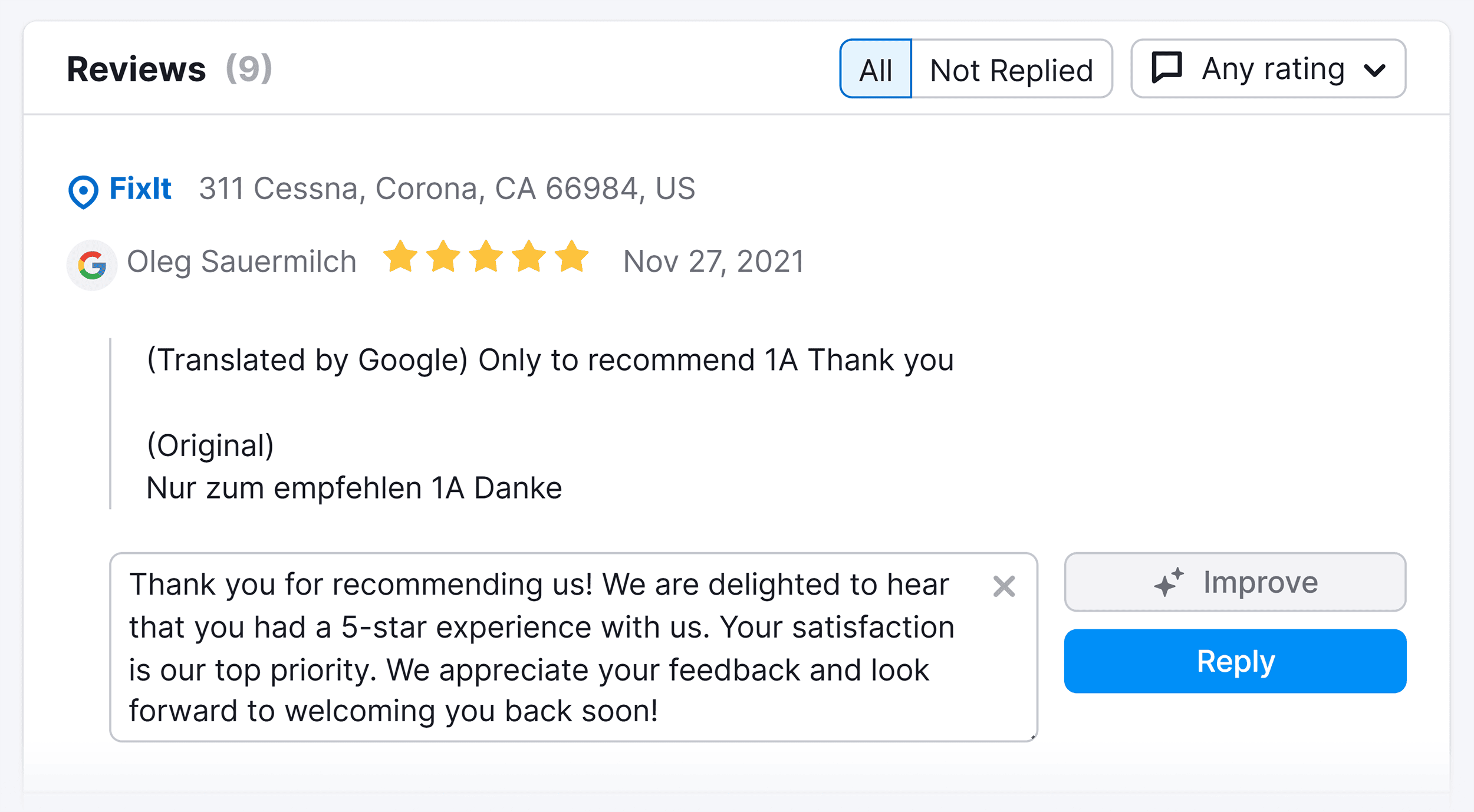
And the tool can respond automatically to positive reviews using AI.
That way, you can quickly and easily stay on top of your reviews and show customers you care.

Stay Informed on Industry News
Keeping up with the industry changes helps you adapt your strategy and maintain SEO results.
There’s always something new happening in the world of SEO:
- Search engines like Google frequently roll out algorithm updates: These changes can significantly impact your rankings, so it’s crucial to stay informed and adjust your strategy accordingly.
- New trends in technology can shift the SEO landscape: One particularly relevant example of this is Google starting to use AI to generate direct answers and summaries in search results through AI Overviews.
- New best practices, tools, and strategies pop up: The SEO industry is huge, and individuals and agencies are always iterating on their processes. Whether it’s a novel method for keyword research or a new tool that streamlines your workflows, you want to stay on top of it all.
You can stay informed about recent developments by:
Make it a habit to dedicate some time each week to catch up on the latest news.
By keeping yourself informed, you’ll be better equipped to adapt your strategy quickly and maintain your visibility in search.
Boost Your SEO Knowledge to Maintain Your Rankings
Clearly, there’s a lot to learn and monitor when it comes to SEO maintenance. While tools like Semrush can make it much easier, there’s no substitute for understanding the fundamentals.
Here are a few helpful resources to give you the knowledge to stay on top of your site’s SEO:
- The Ultimate SEO Tutorial: Learn everything you need to know to improve your site’s rankings, no matter your current level of knowledge.
- On-Page SEO Guide: Drill down to the fundamentals of on-page optimization to boost your pages’ visibility in search results.
- SEO Trends You Need to Know: Stay on top of the latest trends in SEO, so that you can adapt your strategy and stay ahead of the competition.
